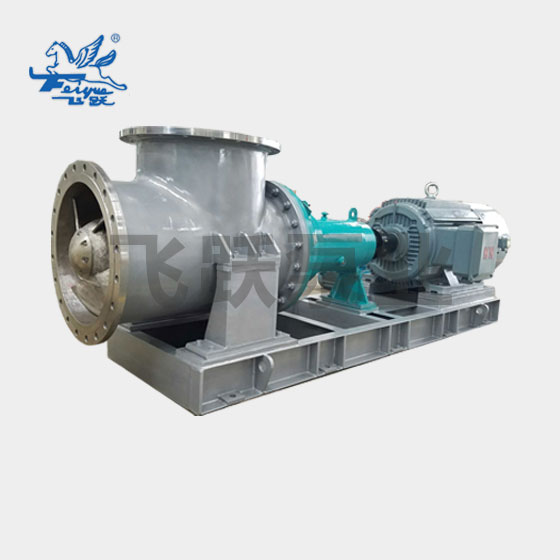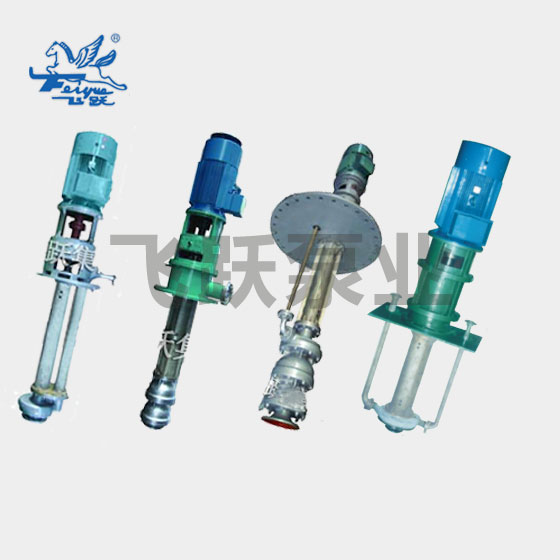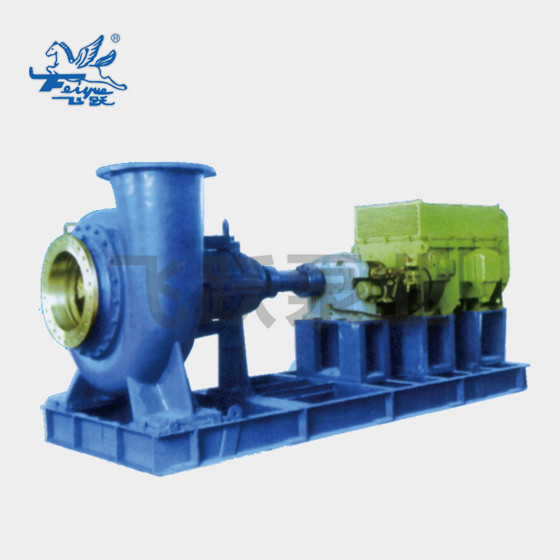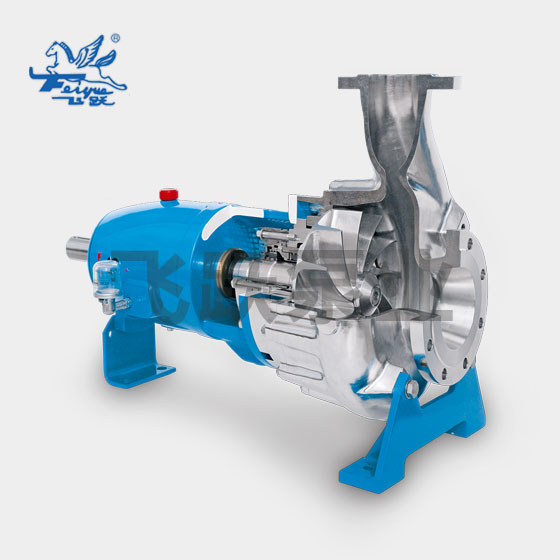The concept and characteristics of magnetic pump
Magnetic pump overview
The magnetic pump consists of three parts: pump, magnetic actuator and motor. The key component magnetic actuator is composed of an outer magnetic rotor, an inner magnetic rotor and a non-magnetically conductive isolation sleeve.
When the motor drives the external magnetic rotor to rotate, the magnetic field can penetrate the air gap and the non-magnetic material, driving the internal magnetic rotor connected to the impeller to rotate synchronously, realizing the contactless transmission of power, and converting the dynamic seal into a static seal. Because the pump shaft and inner magnetic rotor are completely enclosed by the pump body and isolation sleeve, the problem of "running, running, dripping, and leakage" is completely solved, and the flammable, explosive, toxic, and harmful media in the oil refining and chemical industry are eliminated through the pump seal. The potential safety hazards effectively ensure the physical and mental health and safe production of employees.
Working principle of magnetic pump
Assemble n pairs of magnets (n is an even number) on the inner and outer magnetic rotors of the magnetic actuator in a regular arrangement, so that the magnet parts form a complete coupled magnetic system. When the inner and outer magnetic poles are opposite to each other, that is, the displacement angle between the two magnetic poles Φ=0, then the magnetic energy of the magnetic system is the lowest; when the magnetic poles rotate to the same pole, the displacement angle between the two magnetic poles is Φ=2π /n, the magnetic energy of the magnetic system is the largest at this time. After removing the external force, because the magnetic poles of the magnetic system repel each other, the magnetic force will restore the magnet to the state with the lowest magnetic energy. The magnet then moves, driving the magnet rotor to rotate.
Structural features
1. Permanent magnets
Permanent magnets made of rare earth permanent magnets have a wide operating temperature range (-45-400°C), high coercive force, and good anisotropy in the direction of the magnetic field. Demagnetization does not occur when the same pole is close to each other. It is a good source of magnetic field.
2. Isolation sleeve
When a metal isolating sleeve is used, the isolating sleeve is in a sinusoidal alternating magnetic field, and an eddy current is induced in a section perpendicular to the direction of the magnetic force line and converted into heat. The expression of vortex is: Pe-vortex; K-constant; n-rated speed of the pump; T-magnetic transmission torque; F-pressure in the spacer; D-inner diameter of the spacer; resistivity of a material;-material Tensile strength. When the pump is designed, n and T are given under working conditions, and the reduction of vortex can only be considered from the aspects of F and D. The use of high-resistivity, high-strength non-metallic materials for the isolation sleeve has a significant effect in reducing eddy currents.
3. Cooling fluid flow control
When the pump is running, a small amount of liquid must be used to flush and cool the ring gap area between the inner magnetic rotor and the isolation sleeve and the friction pair of the sliding bearing. The flow rate of the coolant is usually 2%-3% of the design flow rate of the pump. The annular gap between the inner magnetic rotor and the isolation sleeve generates high heat due to eddy currents. When the cooling lubricating fluid is insufficient or the flushing hole is not smooth or blocked, it will cause the temperature of the medium to be higher than the working temperature of the permanent magnet, which will gradually lose the magnetism of the inner magnetic rotor and invalidate the magnetic actuator. When the medium is water or water-based liquid, the temperature rise in the annulus area can be maintained at 3-5°C; when the medium is hydrocarbon or oil, the temperature rise in the annulus area can be maintained at 5-8°C.
4. Plain bearing
The materials of magnetic pump sliding bearings include impregnated graphite, filled PTFE, engineering ceramics, etc. Because engineering ceramics have good heat resistance, corrosion resistance and friction resistance, the sliding bearings of magnetic pumps are mostly made of engineering ceramics. Because engineering ceramics are very brittle and have a small expansion coefficient, the bearing clearance must not be too small to avoid shaft-holding accidents. Since the sliding bearing of the magnetic pump is lubricated by the medium conveyed, different materials should be used to make the bearing according to different media and working conditions.
5. Safeguard
When the driven part of the magnetic actuator runs under overload or the rotor gets stuck, the main and driven parts of the magnetic actuator will automatically slip off to protect the pump. At this time, the permanent magnet on the magnetic actuator will generate eddy and magnetic losses under the action of the alternating magnetic field of the active rotor, causing the temperature of the permanent magnet to rise and the magnetic actuator to slip off and fail.
The advantages of magnetic pumps are as follows compared with centrifugal pumps that use mechanical seals or packing seals.
1. The pump shaft is changed from a dynamic seal to a closed static seal, which completely avoids medium leakage.
2. No need for independent lubrication and cooling water, reducing energy consumption.
3. Driven by the coupling becomes synchronous drag, there is no contact and friction. The power consumption is small, the efficiency is high, and it has the function of damping and reducing vibration, which reduces the impact of the motor vibration on the pump and the impact of the pump on the motor when cavitation vibration occurs.
4. When overloaded, the inner and outer magnetic rotors slip off relatively, protecting the motor and pump.








